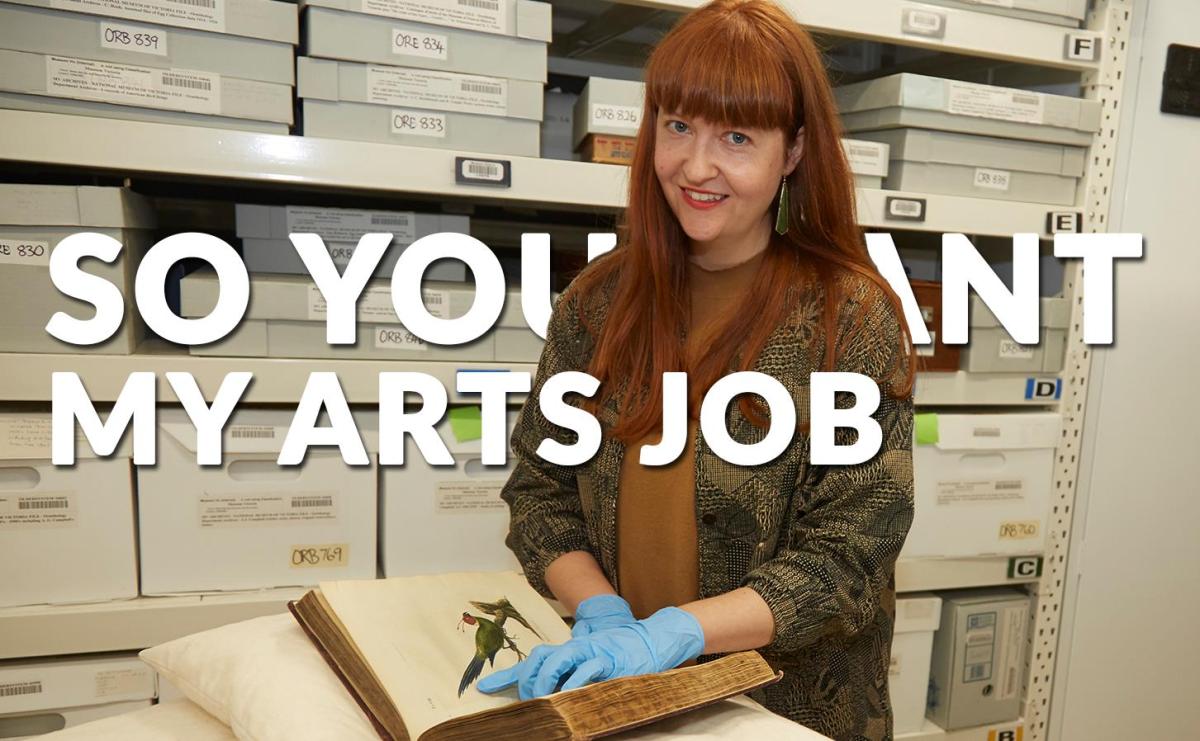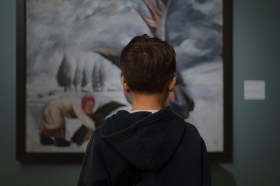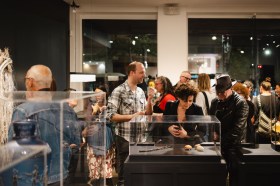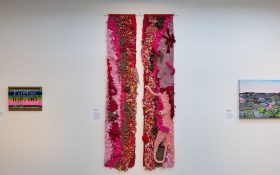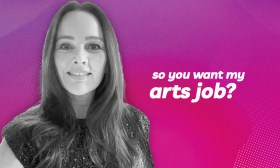From managing Museums Victoria’s (MV) collection of rare books, to investigating the Museum’s history through archival research, Hayley Webster’s position as Library Manager at MV is one that requires specialist knowledge, a vested interest in history, and the ability to adapt to changing organisational requirements and priorities.
How did you get started as a library manager at Museums Victoria?
I started out on a student placement in the Museums Victoria Library in 2009, and had such a wonderful experience that I was keen to work for the institution in any relevant capacity. I did several stints on various exhibition projects doing image research and managing permissions before taking on the role of Librarian in 2011. When my manager retired in 2014 I was the successful applicant for the job, and I have been happily working in that capacity ever since. As the manager I have more planning, research, and project opportunities, which I really enjoy. One of my ongoing research projects is the library’s history, which I dip into when I can. This involves archival research using 19th and 20th century accession registers, invoice books, and correspondence. My research has allowed me to deepen my understanding of collection development across the library’s history, and sometimes turn up interesting tidbits. For instance, when I was looking for information on a transfer of books from the Melbourne Observatory to the museum that took place in 1944, I found that we never received some of our journal issues due to naval conflict during World War II that saw them go missing at sea.
How do you develop a career as a MUSEUM LIBRARY MANAGER?
My job is quite specific, and there are only a limited number of equivalents in other Australian museums and galleries – based in either state or national institutions. Generally speaking, the library sector is divided up into public, school university and special libraries. My role falls into the latter category, which covers a wide variety of specialist libraries in the government and private sectors. If someone were looking to develop a career as a museum librarian, I would suggest seeking experience in other special libraries, or in libraries with special or rare collections. It is helpful to have some understanding of the various disciplines in a museum, and to gain a broad grasp on the literature. Museums Victoria is very multi-disciplinary, so I can’t really hope to have deep subject knowledge in all disciplines, however I have developed my knowledge of rare books around our collection strengths, mainly in the area of natural history books.
In terms of education and training, there are various pathways into librarianship. Courses in information management tend to be the most frequent, and if someone were wanting to work in a museum I would suggest that they look to cover topics such as digitisation, special collections, special libraries, high level cataloguing and metadata skills, project management, digital curation, copyright and advanced reference skills. There’s no specific educational pathway into museum librarianship, but it is possible to build up relevant skills while studying and through professional development once in the industry. A relevant professional development scheme exists through ALIA: the Heritage Collections PD Stream.
What is the biggest misconception about doing what you do?
“Oh, you’re a librarian? Isn’t everything online now? The short answer to this is no, it’s not! There are still large-scale digitisation projects taking place, and a lot of recent material is online but behind a paywall. While the prevalence of online materials has certainly changed what librarians do, we are still in demand to fill the gaps in access or to assist in digitisation. I work on a worldwide project called the Biodiversity Heritage Library, which seeks to digitise out of copyright biodiversity texts and make them freely accessible. I select materials to be digitised and also sometimes write posts for their blog – the latest one is about the destructive impact of fashion on bird populations told through books in our collection.
In an interview for your own job, what would you be looking for?
That sounds like an awkward interview! I would look for someone who has broad experience, ideally in a special library context, as my role is quite varied in terms of skill-set and tasks. I would also seek someone who is adaptable, as the role requires someone who can quickly respond to changing organisational requirements and priorities. I think both the position and the library have a lot of potential, so I’d look for someone who has a vision for the library and can plan for its use and development into the future.
What’s the best thing that’s happening in your industry at the moment?
A silver lining in the midst of the pandemic has been all of the amazing content on rare books, bibliography and book history that is being shared by people around the world. I have seen so much content that I previously would not have had access to, and it was certainly a great distraction when we were in lockdown. I edit the Bibliographical Society of Australia and New Zealand’s newsletter, Broadsheet, and the constant flow of content has allowed me to stay informed and report on what is happening in the world of rare books.
What’s one of the most interesting things to happen in your job?
Gosh, I am lucky in that respect! Any time I work with the Rare Book Collection I learn something interesting. I think the thing I find most compelling is that there is always something new to learn, even after 10 years in the organisation. I have done a number of formal courses to develop my knowledge in rare books on topics such as bibliography, provenance research, book bindings and natural history books. I loved them all! However, there is a lot to learn on the job too, and looking at the collection for different reasons can turn up different things. In my time at MV I have worked with colleagues to survey the collection from a number of different perspectives, including conservation, valuation, a collection move and rehousing, risk assessment and commercial projects. Recently I have been working on a wish list to identify titles I would like to add to the collection in an ideal world, and that has helped me understand our collection strengths better as well as gaining insight into where some of the disciplines overlap. All together these activities have helped form a picture in my mind of the collection, and there is something very satisfying about that.
